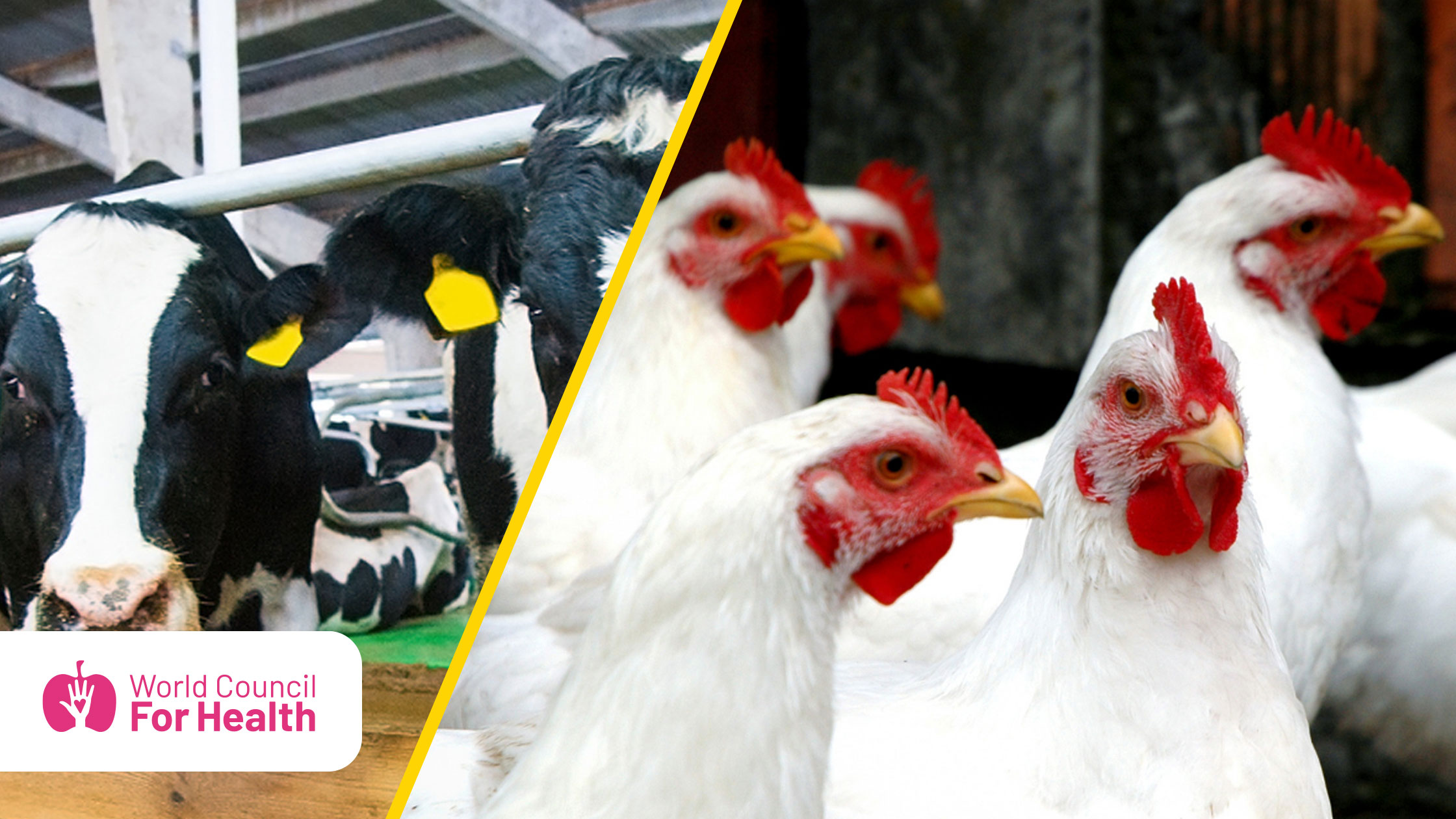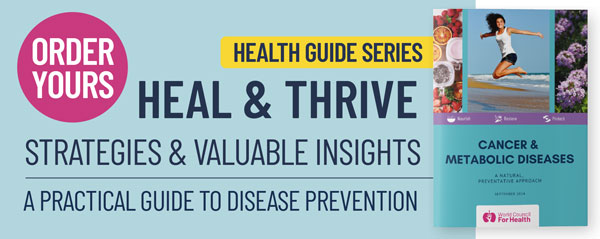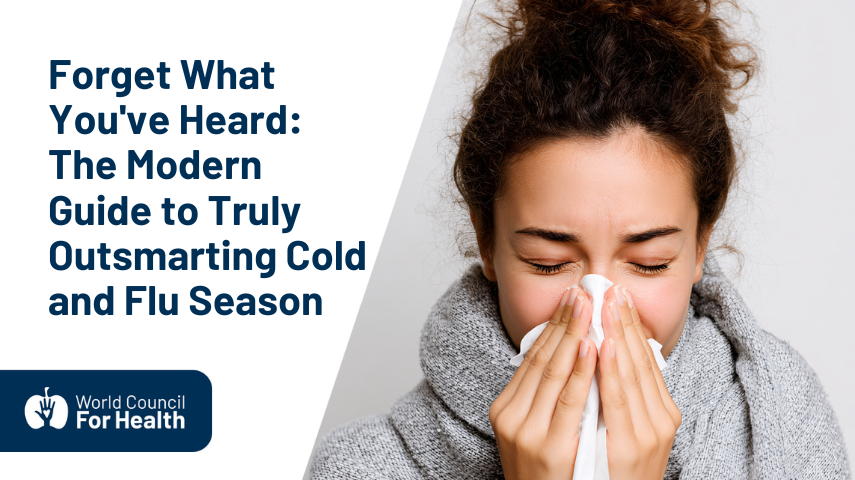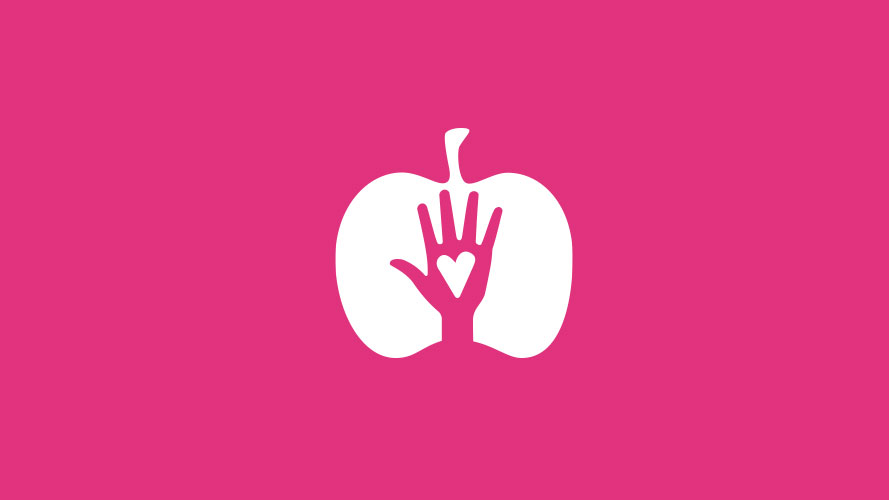According to the United States Centers for Disease Control and Prevention (CDC), the largest outbreak of bird flu ever recorded is currently underway. Avian Influenza, or bird flu, has reportedly been detected in more than 9,000 wild birds and more than 90 million poultry have been affected in the United States alone. Outbreaks have been reported in Asia, Africa, Europe, the Pacific, and the Near East, wreaking havoc on the poultry industry and impacting farmers’ livelihoods as well as international trade.
Importantly, naturally occurring avian influenza has never posed a threat to humans, and humans remain at very low risk from the virus. In fact, the CDC maintains that this is the case and that there is no known mechanism for human-to-human transmission. According to the World Health Organization, bird flu has been responsible for only 463 deaths worldwide over the past 20 years.
Despite this, US President George Bush spent more than $7 billion on preparations for a bird flu pandemic, warning in 2005 that it could kill as many as two million Americans. In 2022, a video surfaced of former CDC Director Robert Redfield predicting that bird flu jumping to humans would result in a “great pandemic”. Redfield again warned of bird flu in 2024, implying that if it results in a pandemic, it is likely man-made.
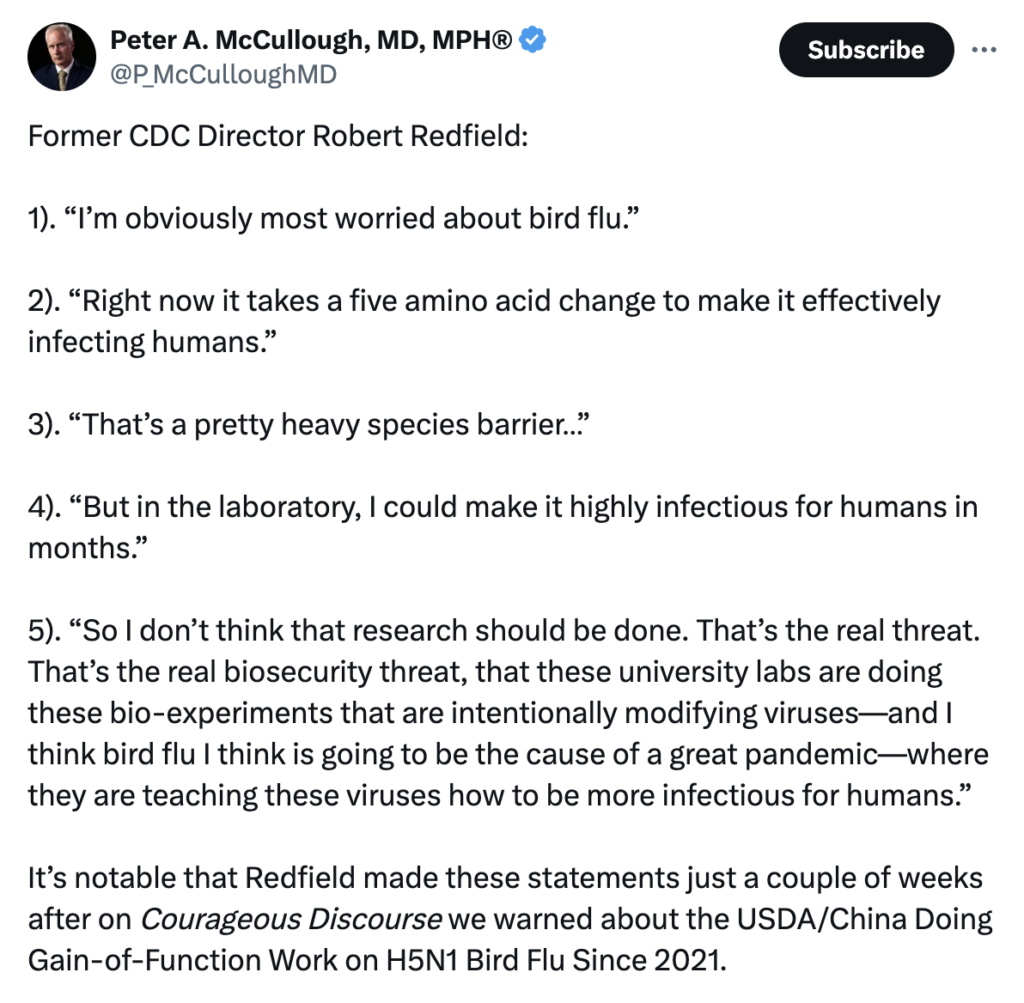
US Food and Drug Administration Commissioner Robert Califf recently warned that a bird flu pandemic could be ”10 times worse than Covid-19.”
Currently, two cases have been recorded in humans in the United States, both in cattle workers. The only symptom either case experienced was conjunctivitis – or pink eye. A nasal swab in the latest case in Michigan tested negative while an eye swab tested positive. Michigan now reportedly has 19 infected dairy farms.
It is important to remember that a positive PCR is not predictive of infectiousness unless integrated with the clinical decision-making of the individual being tested and an estimate of viral load to indicate the likelihood of being infectious. A PCR test only detects elements of viral sequences and was never intended to make a diagnosis. A PCR test is also unable to detect the identity of a virus.
Australia’s first case of H5N1, human or otherwise, involves a child who became infected while visiting India in March. The child has made a full recovery. Outbreaks in Australia thus far have involved the H7 strain of avian flu.
The US Department of Health and Human Services (HHS) now says that a plan is moving forward to produce a whopping 4.8 million doses of an H5N1 vaccine in preparation for a pandemic. Moderna and Pfizer about developing vaccines using mRNA technology according to HHS Assistant Secretary for Preparedness and Response Dawn O’Connell.
Additionally, the US Government holds three Food and Drug Administration (FDA)-approved H5N1 vaccines in its National Pre-Pandemic Influenza Vaccine Stockpile, manufactured by Sanofi, GSK, and CSL Seqirus. The stockpiled vaccines, licensed in 2013, 2017, and 2020, were made for an earlier version of H5N1 and may not be effective against current strains.
In Europe, the European Medicines Agency (EMA) has approved two bird flu vaccines on 22 February 2024.
The CDC is urging increased surveillance in the US including an increase in flu testing and sewage surveillance, reminding many of the early stages of the Covid-19 saga.
There is a Better Way
Rumors of a deadly bird flu pandemic, hot on the heels of Covid-19, remind us of the disastrous results of implementing novel GMO gene products on a mass scale and without adequate testing.
What would have been helpful then and now, is a focus on the things we can do to promote good health, as well as simple, effective, and safe remedies for symptomatic people and animals alike.
Vaccines can not prevent infection by a respiratory pathogen, as antibodies do not circulate in the nasal mucosa. However, there are many other ways to prevent and treat disease, especially when one identifies the root cause.
Here are a few simple approaches to keep you and your family healthy:
- Use a disinfecting nasal spray, such as nitrous oxide, hydrogen peroxide, or iodine.
- Avoid sugar.
- Take several grams of vitamin C daily.
- Boost vitamin D levels to 50-80 ng/ml.
- Take zinc with a zinc ionophore like quercetin.
- Use ivermectin and artemisia to reduce flu-like symptoms.
Instead of being caught unaware, let us learn from the Covid-19 experience. Stock up on these remedies, improve your overall health through diet, exercise, and mindfulness, and don’t get caught up in the fear-mongering from public health organizations and the media.
Read more on the World Council for Health Substack.
